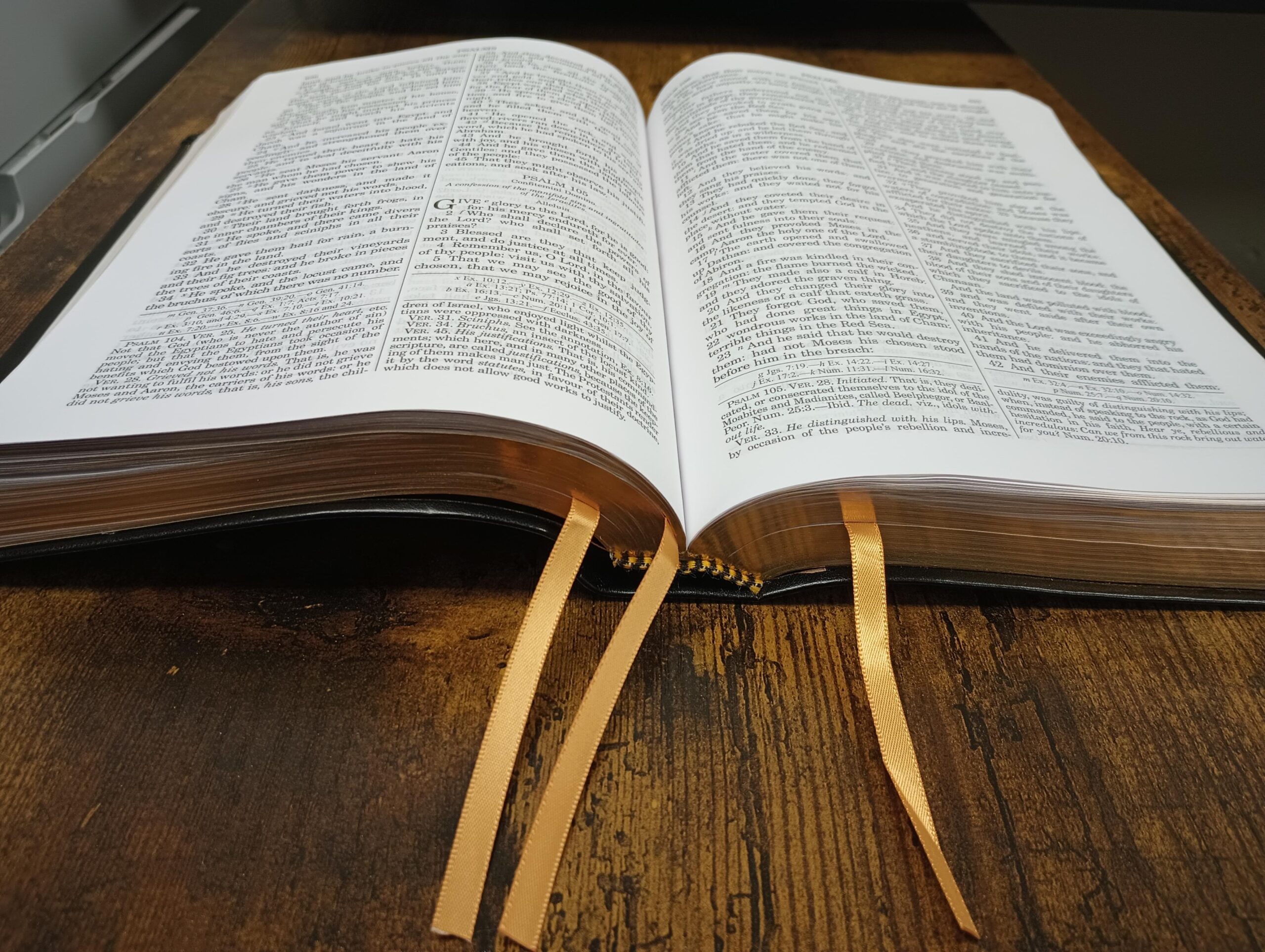
TAN Books recently released an “ultra-soft leatherette” large-print edition of their Douay-Rheims (DR) Bible. While this edition is certainly not without its defects, it is overall a well-done product that satisfies the need for a large-print Douay-Rheims that doesn’t feel clunky.
The book measures in at almost exactly 9 ½ by 6 ½ in., with a thickness of 1 ½ in. For comparison purposes, the size is comparable to the Great Adventure Catholic Bible, though just a hair thinner. It would easily fit in a backpack, computer bag, satchel, etc., unlike some of the large-print editions available from other publishers such as Loreto or Baronius.

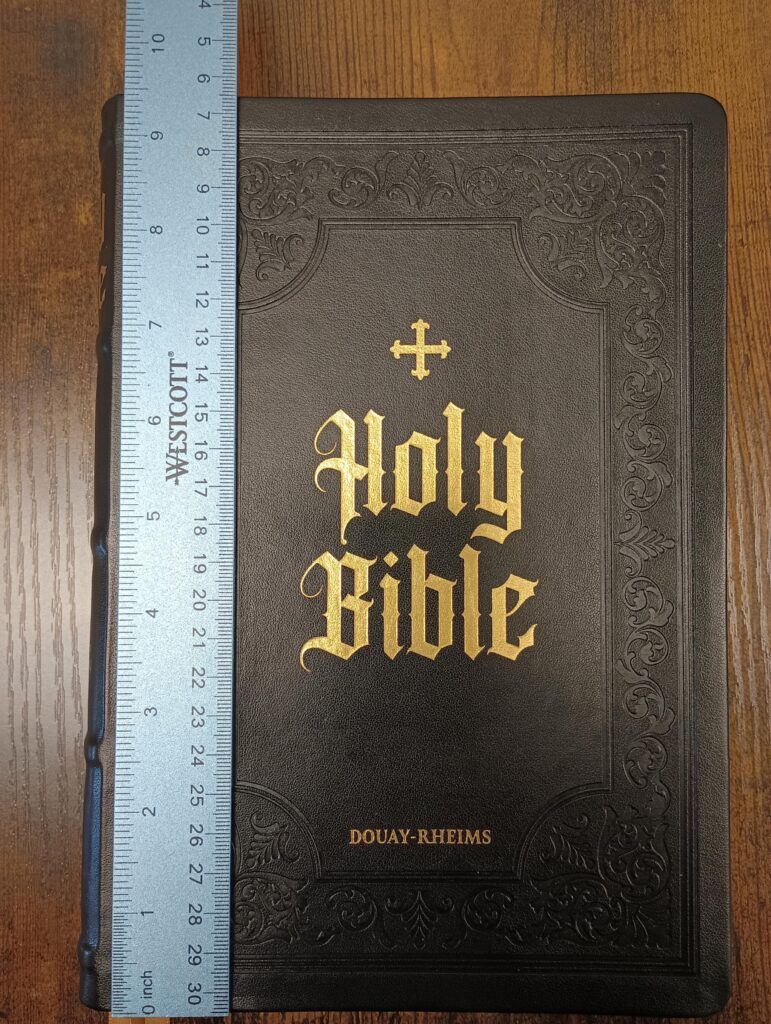
The exterior of the Bible uses a soft faux leather (“leatherette”) similar to the cover of TAN’s standard size leatherette DR. The cover has a nicely imprinted design around the edges, similar to the large-print NABRE published by Catholic Bible Press. “Holy Bible” is beautifully stamped on the cover and spine (along with the other standard inclusions such as translation, publisher, etc.). Interestingly, the spine includes five raised hubs, which is a nice addition.
Most importantly, the binding is sewed. The gilding is comparable to other Bibles from TAN Books, and I haven’t noticed any flaking. The liner is paste-down, as one would expect. And, while this Bible is relatively floppy, it’s not quite as floppy as TAN’S burgundy leatherette DR. This could simply be due to the fact that the cover is thicker than cover of their standard-size printing. Uniquely in TAN’s Bible lineup, this edition is printed with three ribbons, each with a thickness of just over ½ cm. All in all, the exterior design of this edition is the nicest I’ve seen from a TAN Bible. If you’re a Douay-Rheims reader, this could be a great candidate for your daily reader!
To me, the interior is the biggest weakness of this edition. With the exception of the larger font (which measures in at just a smidge under 10pt.), there just isn’t anything new or exciting offered here by TAN Books. It’s the same 1899 edition of the Douay-Rheims, with the same typos, and the same formatting (double-column, verse-by-verse, etc.). Like TAN’s other Bibles, the paper has the feel and smell of a newspaper, and the font (both black and red) isn’t particularly bold—though I certainly wouldn’t consider it to be faint or unreadable. The print-consistency is notable throughout. In the past, I’ve had TAN Bibles whose red letters ranged from an unreadable pink to a dark crimson. In this edition, I’ve noticed that both the black and red letters are printed consistently throughout. I would prefer the font to be a touch darker and bolder for better legibility. But, if you own the standard-size printing of TAN’s DR, and you’re just looking for a larger printing, this is exactly what you’re looking for.
Overall, I think any DR reader who is looking for a large-print edition that isn’t a hardback or the size of a brick would appreciate this edition. The font isn’t as legible as Loreto’s, which—in my opinion—has the best text-formatting of any currently-printed Douay-Rheims Bible. But the TAN edition is perfectly readable for me (I usually prefer 10pt. font or larger). The quality isn’t as sophisticated as Baronius Press’s standard- or large-print DR. But, it’s much easier to slip in a backpack or satchel. To me, it’s the current “Goldilocks” of Douay-Rheims Bibles. It’s neither too large nor too small. And for you, if the Douay-Rheims is your primary or ancillary translation of choice, it might be just right!
I want to conclude this review with some pastoral notes on the translation. It is my [limited and anecdotal] experience that Bishop Richard Challoner’s 18th century revision of the Douay-Rheims Bible continues to hold a strong place in the hearts and minds of many of the Catholic Faithful. It is often the vernacular translation read at Masses celebrated according to the 1962 Missal, as well as the translation found in most Latin-English hand-missals used by the Faithful there in attendance. Its venerable phrases can be found painted in Church apses throughout the English-speaking world, and they can be heard whenever the Rosary is prayed aloud. Sometimes, the particularities of the Latin Biblical tradition are surprising and even exhilarating! Come on, who doesn’t prefer a whistling of a gentle air to a still small voice? (3 Kings 19:12 in the Douay-Rheims; 1 Kings 19:12 in most modern translations) I digress. Point is: I cringe when the Douay-Rheims is dismissed as being archaic and useless, and its readers characterized as reactionary and nostalgic. Despite its textual or linguistic shortcomings, the DR is the language of prayer and devotion for many Catholics, it’s part of the “received” Biblical tradition of the Latin West, and I think it will continue to hold a place in the hearts and minds of many—just as the KJV does in the lives of so many English-speaking Christians, regardless of its textual basis or archaisms.
On the other hand, the DR has its manuscript and translational weaknesses, and it certainly shouldn’t be glorified as the “only” or even the “most” accurate translation of the Scriptures into English. Did St. Jerome have access to manuscripts unavailable to modern scholars? Most likely. But guess what? We don’t have access to any original manuscripts of St. Jerome! The 8th century Codex Amiatinus is the best-preserved and oldest codex of the Vulgate available, though the post-Tridentine publications of the Vulgate preferred to use later Medieval codices. So, the Douay-Rheims is hardly a perfectly preserved window into the late 4th century. Rather, it is a very literal 18th century revision of a late-16th and early-17th century translation of a sloppy late-Medieval recension of St. Jerome’s Vulgate. And, even the extant texts of Greek, Hebrew, and Aramaic to which it was “diligently compared” have all been superseded by better critical editions since the 18th century. That doesn’t make it a bad or untrustworthy translation by any means, but let’s not pretend that it’s the final word on the Word.
That being said, the Douay-Rheims still has a place in the life of the Church, even if primarily for devotional reading. It has certainly edified me in the past, even if it isn’t my “go-to” translation—that honor is generally reserved for the RSV-2CE, though I’ll poke around in the NRSV and NABRE from time to time. If a well-bound, large-print Douay-Rheims is what you’re in the market for, this might be worth purchasing. While I prefer the Loretto publication, primarily due to the highly-readable font and layout, this is certainly one of your best options currently for the Douay-Rheims. And, if you prefer a soft cover in a large-print format, this is your option. It’s pricey, but this is a great publication from TAN. Have a blessed Holy Week!
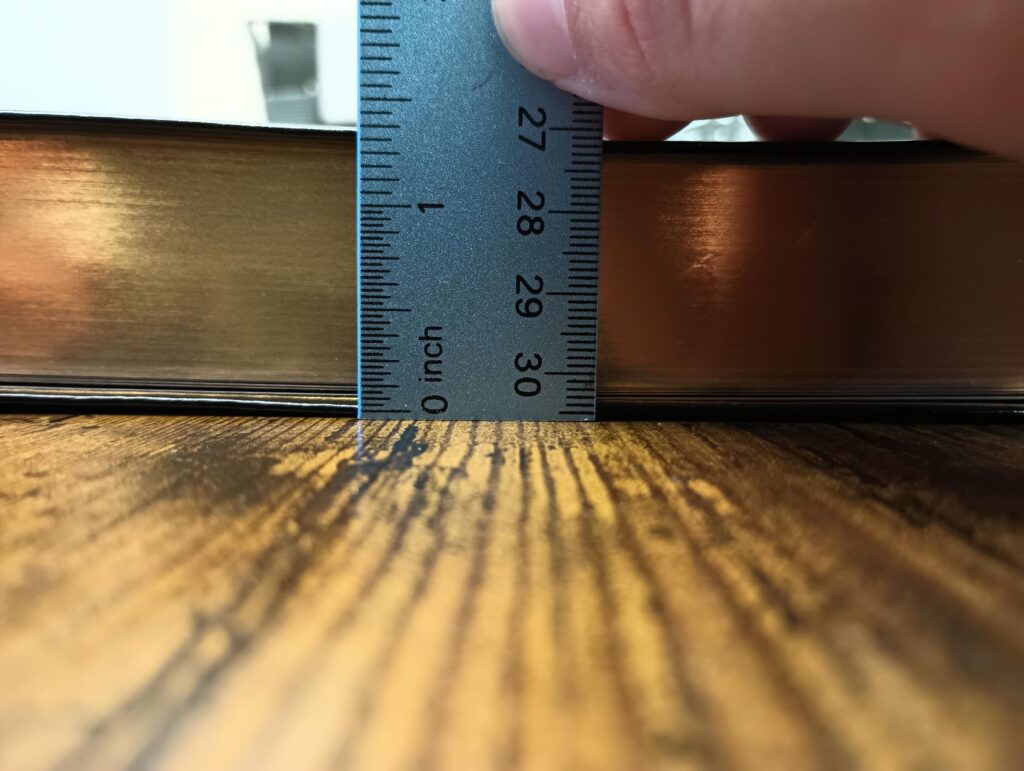
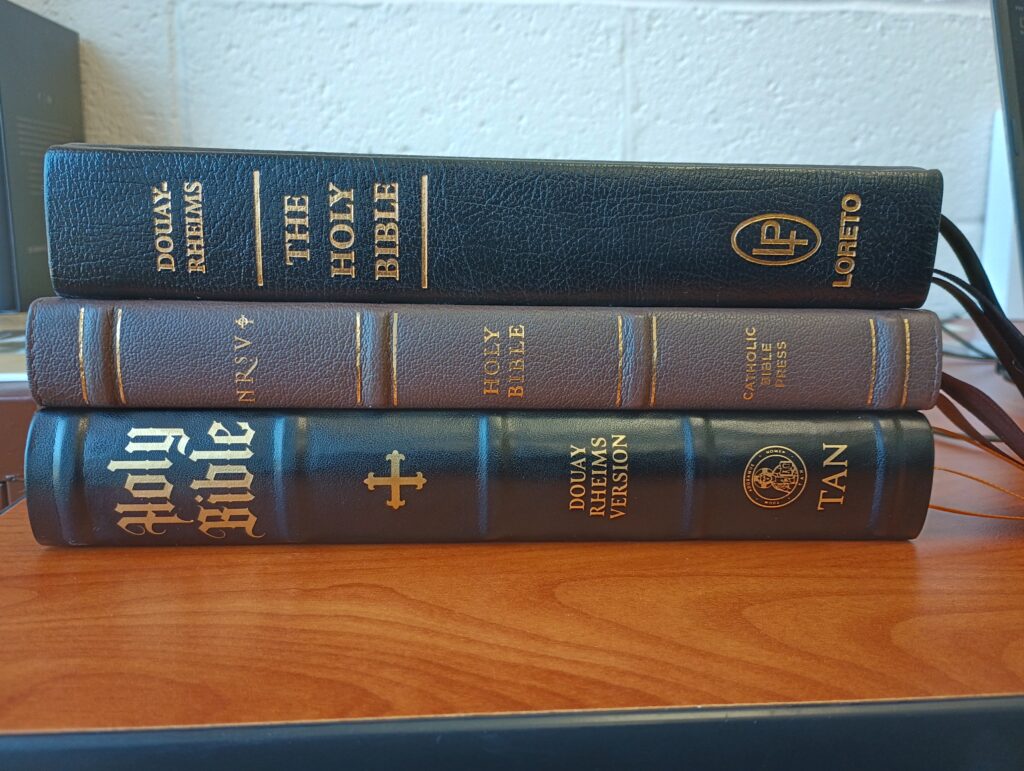

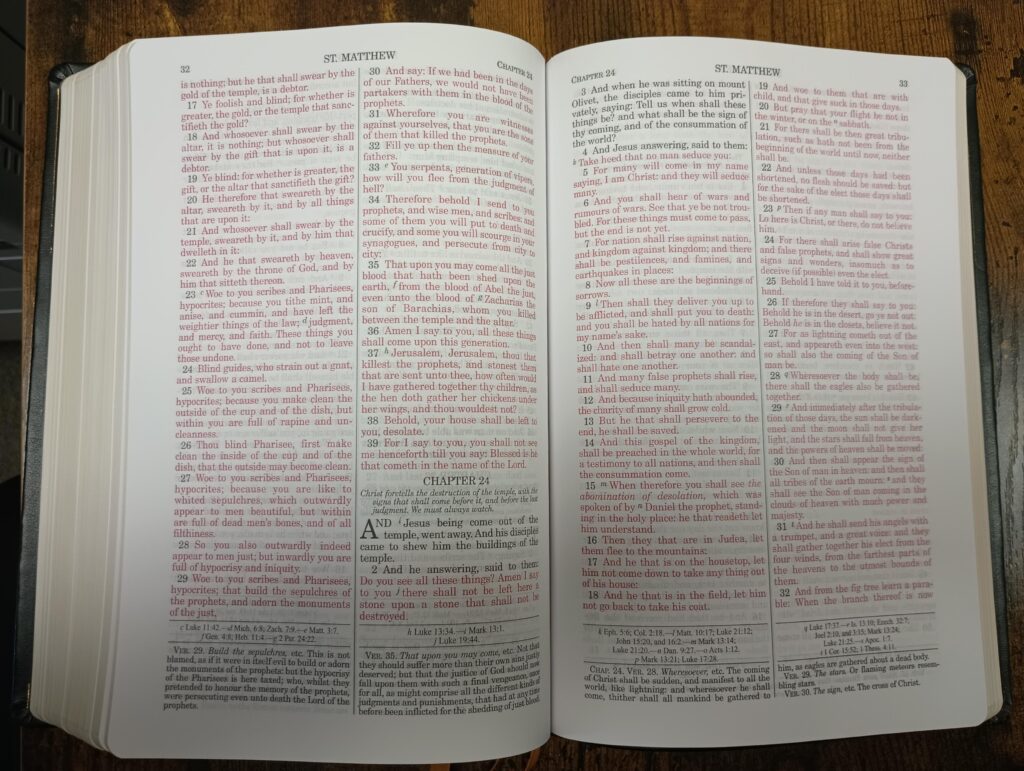
“the feel and smell of a newspaper”
?!
I should have written that better, sorry. What I meant to say is that the ink in TAN’s Bibles tends to smell a bit like newspaper ink, and the pages are a bit crinkly… It’s obviously Bible paper, but it tends a little too much towards newspaper ink and paper for my taste.
I sent my copy back. The paper and print quality I found lacking. Between Baronius Press, Loreto, and St. Benedict Press/Tan, my favorite DR Bible is the leather-bound version published by St. Benedict. The paper quality is superior to all the others and the red lettering is not difficult to read. I also have the three-volume Latin-English DR from Loreto. The New Testament paper is fantastic while the two-volume Old Testament paper is the same as in their single-volume DR Bible which is sufficient. I had high hopes for this new edition. I’m blessed to have found a 1950 all DR Old Testament with a Confraternity New Testament Holy Family Edition of the Catholic Bible. I will be having this rebound in leather. While large, the DR Old Testament is typeset in paragraph format! It has other value-added features such as Papal encyclicals, Catholic Bible Facts, Catholic Dictionary, section on the sacrifice of the Mass, photographs, art, etc. The paper and print are incredible as well. Most Bibles are not made with the quality and craftsmanship of 75 years ago.
Hi Father,
I have to agree in that I have found my sweet spot for devotional reading in a 1950 DR- Confraternity Bible from PJ Kennedy and sons edition. The physical size of the volume, the text layout and binding is perfect for me.
I definitely like the leather edition from SBP, but the 8pt. font is too small for my eyes, unfortunately… I never had an issue with smaller print until the last 3 years or so…
IMO, if we’re going to keep getting reprints of the 1899 text, I’m satisfied with my actual 1899 (well, 1914) copy from John Murphy Company; not a reprint, but an original print. It may still have all the flaws mentioned above, but at least it has character. And echoing Fr. Joseph, the numerous beautiful editions of Catholic Bibles from the 40s, 50s, and even 60s absolutely put the current stock to shame: the various Douay-Confraternity Bibles, including the “Rembrandt” and “Michelangelo” editions, immediately come to mind., particularly in the UK, also got a surprising number of formats. Even the Jerusalem Bible got an impressive “Salvador Dali” edition in 1970! I have to say, innovation is overrated; if Catholic publishers simply plagiarized the formats and designs that their predecessors created 60+ years ago in the Confraternity Bible era, they’d have some of the best designs out there on the market, because some of those Confraternity Bibles, especially those that included full-color illuminations and illustrations, blow away most any edition made today.
I like Dali’s art in general, but the sacred art he tried to make following his conversion/reversion or whatever it was exactly, doesn’t do it for me, I respect what he was trying to do but his surrealist style doesn’t work with that particular subject matter.
Huh, seems I lost some of my post in posting. *The Knox Bible, particularly in the UK, also got a surprising number of formats.
I love this edition of the Douay, and it has become my main Bible. 🙂 (The D-R is my favorite translation. Obviously, for study purposes, the D-R has its limitations, as described in the post; but if I’m doing any deep study, I would use a variety of translations anyway. I’m not a “D-R onlyist” by any means.) But otherwise I prefer the D-R, and this edition is my favorite one.
Glad I’m not the only one with a sweet spot for the Douay-Confraternity Bible. I love finding solid copies on eBay.
Wait!
Sewn binding??? From SBP???
They’ve been doing sewn binding for several years now. Their older DR’s were glued, but the ones printed recently (within the last 3-5 years, at least) are definitely sewn and glued. The signatures are easy to see.
“I have found my sweet spot for devotional reading in a 1950 DR- Confraternity Bible from PJ Kennedy and sons edition.”
“I’m satisfied with my actual 1899 (well, 1914) copy from John Murphy Company; not a reprint, but an original print. It may still have all the flaws mentioned above, but at least it has character.”
Personally, I just settled on an original 1965 Oxford Annotated Bible, because it got an imprimatur before there was ever an RSV-CE and the New Oxford Annotated was really the only study bible that ever really worked for me. This way, I get my to have my Catholic Bible cake and eat the Oxford Annotated too. 😉
How about a post – or a series – examining personal choices for “vintage” Bibles as their main reading/study Bible? Profile three or four and outline the specific features that made us choose them, and anything special we do to keep them usable (if they’re fragile)? I actually bought an Oremoose cover to preserve the dust jacket and binding while I read it.
I just meant I was satisfied with the 1914 DR as my DR copy lol. Why get a modern reprint of an old Bible when you can just get the old Bible that the reprints are made from? That DR is faaar from my “main reading/study Bible.” I primarily use the RSV/NRSV for the OT/NT, plus Robert Alter’s Hebrew Bible and the New English Translation of the Septuagint (NETS) to supplement them in the OT.
Would you consider doing a review of your NOAB RSV with imprimatur? I would bet most of the readers here have not seen one.